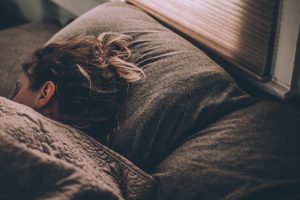What Is A Sleep Study And What Does It Do?
If you are having trouble getting a restful night sleep and it has begun to interfere with your daily life, It may be time for you to consider a home sleep study. Getting to the root of your sleep interruptions can greatly improve your energy levels, productivity, and overall health.
Table of Contents
Toggle
What Is A Sleep Study?
A sleep study, also known as a polysomnography, is a medical test used to evaluate a person’s sleep patterns and diagnose sleep disorders. During a sleep study, the patient is hooked up to equipment whilst sleeping where their brain waves, breathing, oxygen levels, heart rate, and muscle movements are monitored and recorded. This data is then analysed by sleep specialists to identify any abnormalities in the patient’s sleep patterns, such as sleep apnoea, narcolepsy, or restless leg syndrome. Sleep studies can help healthcare professionals determine the best course of treatment for sleep disorders and improve the patient’s overall quality of life.
Home Sleep Studies VS Clinic Sleep Studies
Home sleep studies and clinic sleep studies are both used to diagnose sleep disorders, but they differ in terms of convenience, cost, and level of monitoring.
Home sleep studies are often more convenient for patients as they can be conducted in the comfort of their own homes. This means that patients can sleep in their own bed, wear their own pyjamas, and avoid the disruption of traveling to a sleep clinic. Additionally, home sleep studies are usually less expensive than clinic sleep studies, making them a more affordable option for patients.
However, clinic sleep studies offer more comprehensive monitoring and evaluation of a patient’s sleep patterns. In a clinic sleep study, patients are typically monitored by a trained technician who can adjust the sensors and equipment as needed to ensure accurate readings. The technician can also observe the patient’s behaviour and movements during sleep, which can provide valuable insight into the nature of their sleep disorder.
Overall, the choice between a home sleep study and a clinic sleep study will depend on the individual patient’s needs and preferences, as well as the recommendation of their Healthcare provider.
Sleep Study Overview
Here is a general overview of how a home sleep study is conducted:
- Consultation: The patient will typically have an initial consultation with a healthcare provider to discuss their symptoms and determine if a home sleep study is appropriate.
- Equipment setup: the patient will be provided with a portable device that includes sensors to monitor the patient’s breathing, heart rate, oxygen levels, and other key indicators of sleep quality. The technician will provide instructions on how to set up the equipment properly if at home.
- Data collection: The patient will sleep with the device on, typically for one or two nights. The device will collect data on the patient’s sleep patterns, including any interruptions or abnormalities.
- Data analysis: After the study is complete, a sleep specialist will analyse the data to determine if the patient has a sleep disorder, such as sleep apnoea, restless leg syndrome, or narcolepsy.
- Follow-up: Based on the results of the home sleep study, the healthcare provider will recommend a treatment plan, which may include medication, lifestyle changes, or the use of a continuous positive airway pressure (CPAP) or Mandibular advancement splint.
The Different Types Of Sleep Studies
Type 1, 2, and 3 sleep studies refer to different levels of sleep testing that are used to diagnose sleep disorders. Here are the main differences between the three types of sleep studies:
- Type 1 sleep study (Polysomnography): This is the most comprehensive type of sleep study and is conducted in a sleep clinic. It involves monitoring a person’s brain waves, eye movements, breathing, oxygen levels, heart rate, and muscle activity. Type 1 sleep studies are used to diagnose a range of sleep disorders, including sleep apnoea, narcolepsy, and REM sleep behaviour disorder.
- Type 2 sleep study (Home sleep test): This type of sleep study is a simplified version of a type 1 study and can be done at home. It typically monitors breathing, oxygen levels, and heart rate and is used to diagnose sleep apnoea.
- Type 3 sleep study: This type of sleep study is also known as a limited-channel study and is used to diagnose sleep-related breathing disorders, such as sleep apnoea. Type 3 studies monitor fewer channels of data than a type 1 study and may include monitoring of breathing, oxygen levels, and snoring.

Type 1 studies are the most comprehensive and can provide the most detailed information about a person’s sleep patterns, but they are also the most expensive and require an overnight stay in a sleep clinic. Type 2 and type 3 studies are less expensive and can be done at home, but they may not provide as much information as a type 1 study.
Dentists are now an important profession in playing a role in the diagnosis and treatment of sleep disorders. At QLD Dental Sleep therapy we now provide type 3 sleep studies with reporting and recommendations from a sleep physician. This has been extremely useful to helping patients step into a better quality of life more efficiently especially when resources through their usual GP / testing centres are limited.




